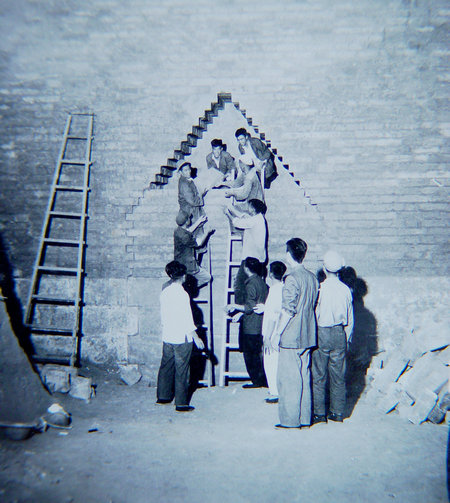 |
|
The opening of the Impregnable Wall. The man on top of the left ladder is Zhao Qichang. [Photo provided to China Daily]
|
"The excavation of the Dingling Mausoleum came about by pure chance," says Yang Shi, wife of Zhao Qichang, a key member of the excavation team who died in 2010. Emperor Wanli had the mausoleum built for himself between 1584 and 1590. The Chinese character for ding in the name means to anchor-a fitting metaphor for the emperor-and ling simply means tomb.
In the late 1980s Yang, together with Yue Nan, a historian, wrote the book Wind and Snow at Dingling (feng xue ding ling), a vivid recount of the entire excavation process.
In the 1950s, when some leading historians and archaeologists in China decided to excavate an imperial tomb from the Ming Dynasty for research, Dingling (1368-1644) was not even near the top of the list, Yang says.
"They initially focused on other tombs, tombs either belonging to a historically more important Ming Emperor or standing the chance of housing crucial information, imperial tomes for example."

